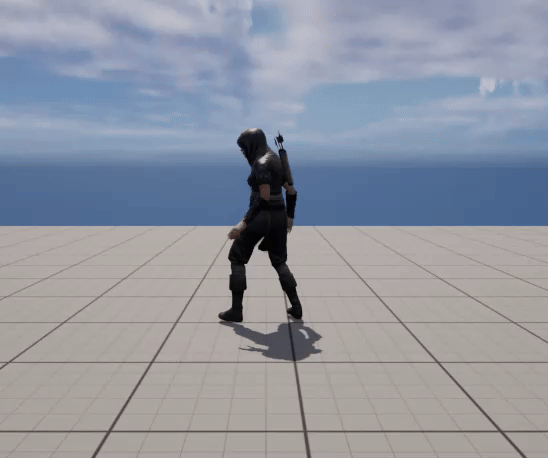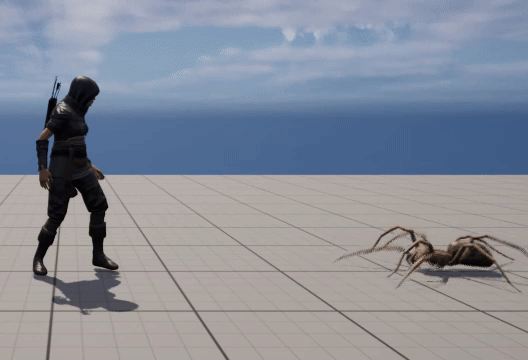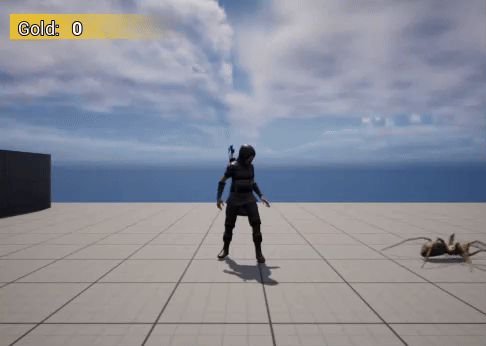|
|
2 months ago | |
|---|---|---|
| .. | ||
| audit | 2 months ago | |
| resources | 2 months ago | |
| README.md | 2 months ago | |
README.md
2.5D Adventure
Overview
This project involves creating a simple 2.5D side-scroller game designed to introduce you to the fundamentals of Unreal Engine 5 and game development, without the complexity of advanced mechanics. It focuses on the essential skills and concepts needed to start your journey as a game developer.

Role play
You've just embarked on your journey into game development, choosing Unreal Engine 5 as your primary tool. Excited by the possibilities, you decide to create a simple 2.5D game as your first project. However, as you dive into the engine, you realize there's a vast array of tools and features you've never encountered before. Now, you're tasked with navigating this uncharted territory, learning new skills in level design, scripting, and asset management to bring your game to life.
Learning Objective
At the end of this project you will have learned:
- Setting up a basic player character (input handling, movement, camera, etc.)
- Basic scripting (
Blueprintsand/orC++). - Collision detection.
- Object creation and
instancing. - Basic UI/HUD.
- Basic level design
- Game logic and flow (Game Loops).
Instructions
General
The use of event dispatchers is mandatory throughout the project, any code coupling will be disqualified.
Tip: look for the observer pattern.
Your game should follow a coherent theme of your choice, whether it's a dark fantasy, sci-fi, or something entirely different. Let your imagination guide you.
Note: the resources section will list some places where you can browse assets.
Tip: For maximum learning, it is recommended to start this project with a blank Unreal project and implement everything from scratch.
Main Menu
The main menu widget should:
- Be on a separate
level/mapfrom themain gamemap. - Contain two buttons:
- Start game button.
- Exit game button.
Player Character
The player character should:
- Have a skeletal mesh.
- Move only along two axes: left-right and up-down.
- Have a basic locomotion system with the following animations:
Idle.Walking.Running.Jumping.Falling.Landing.
- Transition smoothly between a walking and running animations based on their speed.

Tip: Look into the best practices for creating a locomotion system, Animation blueprints and Blend spaces.
Collectible
The collectible Actor should:
- Have a static mesh.
- Rotate around an axis of your choice.
- Have a box collider that acts like a trigger.
- Be collected when the player enters its box trigger.
- Play a sound when collected

HUD
The HUD widget should:
- Display a value related to the
collectible. - Be updated each time a
collectibleis picked up.

Enemy
The enemy character should:
- Have a skeletal mesh.
- Have at least a walking cycle.
- Have a simple AI that patrols between two set points.
- Kill the player on collision.
- Be killed if the player lands on top of it.
- Play a sound when killed.
- create an instance of
Collectibleat the place of death.Note: Make sure the instance of collectible spawned from killing an enemy also updates the HUD.


Game Loop Logic
The game loop consists of a spawn point where the player starts and respawns when dead.
And an end point that defines the player goal to finish the level.
When the player reaches the end point:
- a menu with options to
restartorquitthe game should be displayed.
Level design
Your level design shouldn't consist of just a long, empty run to the finish point. However, since creating a level is a creative process, you have the freedom to design it as you see fit. For example, you can include moving platforms or skill-based platforming elements. The choice is yours to provide the player with a fun and challenging experience.
Tip: look at other games from a similar genre for inspiration.
Bonus
- Add a health system to both the player character and the enemy character. (look into
Components) - Add a simple crouch to your locomotion system.
- more mechanics as you see fit for your game.
- Create a simple
Game Design Documentwhere you describe your mechanics and how are you planning to implement them.
Submission
- In your repository there should be a zip file of a build of your game for your target platform.
If it is not possible to upload files to Gitea due to their size, use GitHub instead and have a look at Git LSF
